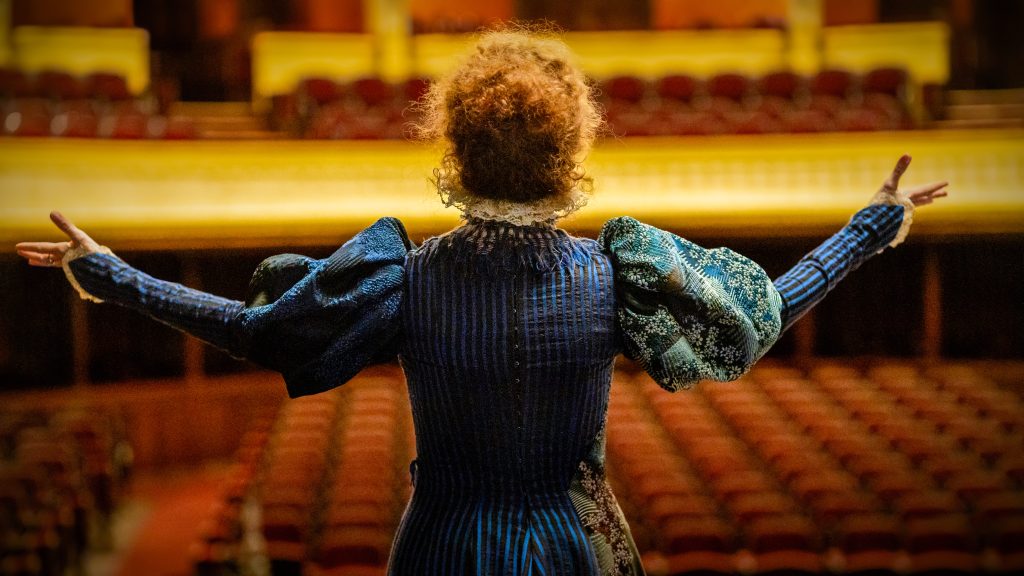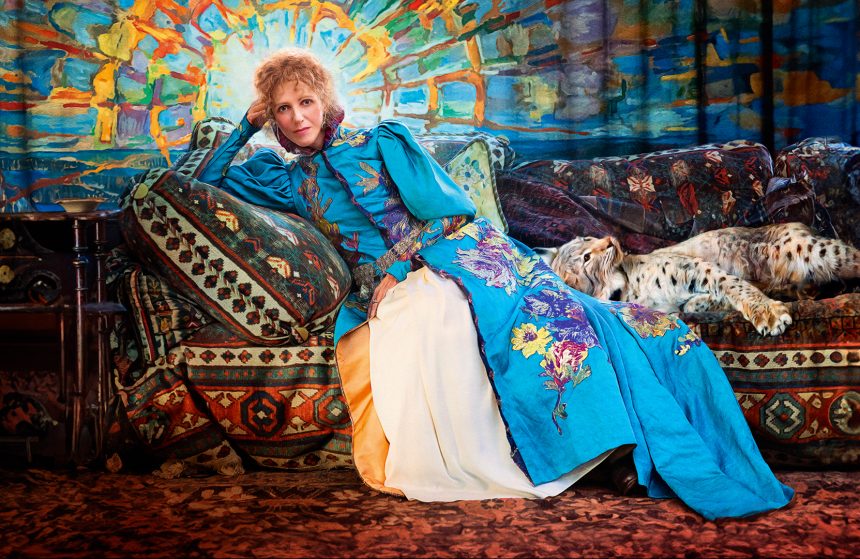Bernhardt was an unapologetic figure in her time, with her fearless artistic expression, rejection of societal norms, and an embrace of individuality. She became an icon of France’s belle époque, and international star of the stage and the silent screen, at a time when the space for creative success was largely, if not wholly, reserved for men. Many social commentators describe Lady Gaga as Bernhardt’s modern day version, or that she sat somewhere between Greta Garbo, Marilyn Monroe, Madonna and Beyoncé. All women who have shattered traditional norms of beauty, gender, and art, creating legacies that blend performance with provocative storytelling. In reality, Bernhardt was far more outrageous than any of them.
The Divine Sarah Bernhardt seduces the audience with its intimate portrayal of Bernhardt, and director Guillaume Nicloux’s film emerges as a sumptuous feast for the senses—a love letter to the decadent enigma that is Sarah Bernhardt. With a painter’s eye for detail and a novelist’s flair for drama, Nicloux’s filmmaking is where glamour, scandal, and poetic melancholy dance hand in hand, and in a film as audacious and seductive as its subject, Nicloux crafts an irresistible portrait of Sarah Bernhardt that is both a visual spectacle and a deeply personal exploration of identity, love, and legacy.

Screening in the French Film Festival 2025
Directed by Guillaume Nicloux
Writing Credits Nathalie Leuthreau, Guillaume Nicloux
Produced by René Kraus, Cloe Garbay, Bastien Sirodot
Music by Reynaldo Hahn, Franz Schubert, Claude Debussy, César Franck, Edvard Grieg, Frédéric Chopin, Maurice Ravel
Cinematography by Yves Cape
Editing by Guy Lecorne, Karine Prido
Costume design by Anaïs Romand
Starring: Starring Sandrine Kiberlain as Sarah Bernhardt, Laurent Lafitte as Lucien Guitry, Amira Casar as Louise Abbéma, Grégoire Leprince-Ringuet as Maurice Bernhardt, Pauline Etienne as Suzanne.
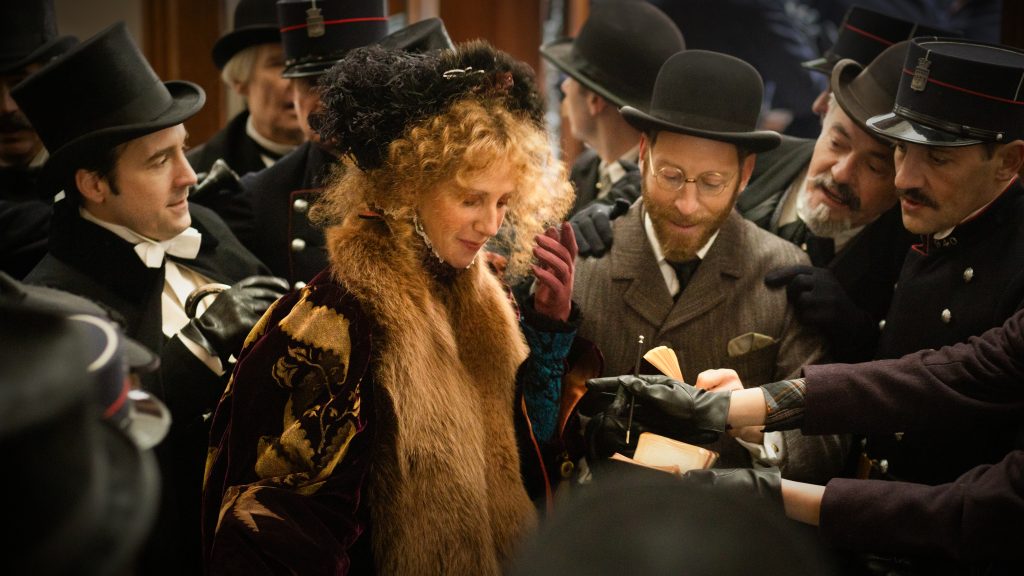
As a businesswoman, fashion icon, sculptor, theatre director, visionary, and courtesan, Bernhardt shattered the confines of her era by pushing gender boundaries with a fearless exuberance. With a screenplay that elegantly flits between the years 1915, 1896, and 1886, the film blurs the line between legend and the real thing, inviting us to witness the pulsating heart of an icon who was—and always will be—larger than life.
Sandrine Kiberlain, (November, AF FFF23) beautifully portrays Bernhardt‘s magnetic presence which consumes every frame. Surrounded by a bevy of lovers and confidants—she becomes the pulse of the narrative, her energy echoing through lavish decors and sumptuous costumes by Anaïs Romand. A stirring classical soundtrack featuring the likes of Debussy and Chopin swells in the background, imbuing each scene with a rhapsodic intensity that is nothing short of irresistible.
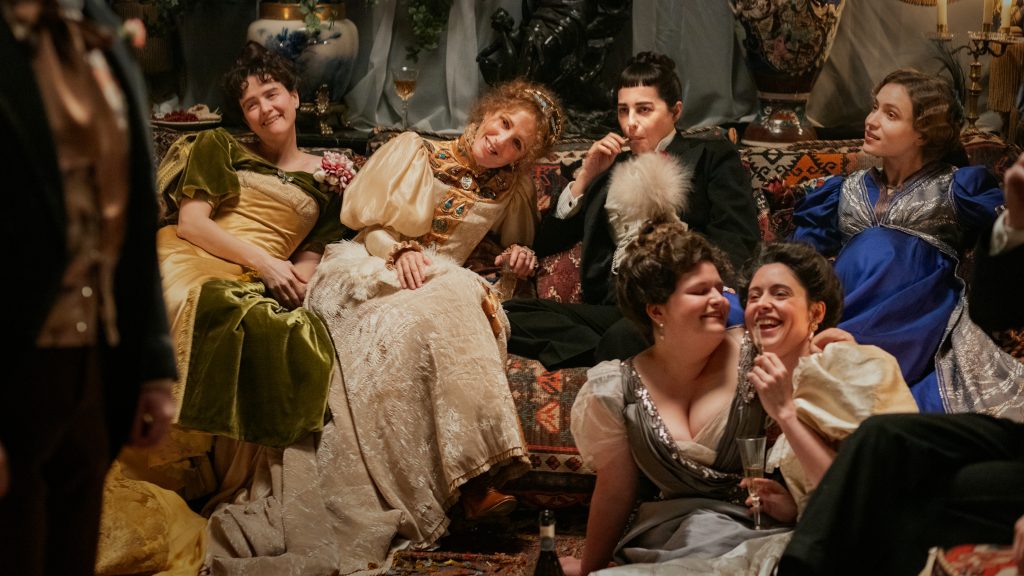
Beyond the film’s narrative lies the tantalising legacy of Bernhardt’s amorous exploits—a litany of liaisons that fuelled her notorious reputation. While the film centres on her tempestuous affair with Lucien Guitry, and even nods to the scandal of her groundbreaking portrayal of Hamlet, historical whispers recount a far more expansive roster of lovers. There was the infamous Greek adventurer and her ill-fated husband, Jacques Damala, whose union scandalised Paris; the actor Lucien Guitry, whose passion and subsequent departure stirred public fervour; and the celebrated poet and dramatist Edmond Rostand, whose intimate encounter is immortalised in symbolic moments on screen. Rumours also suggest flirtations with other luminaries from Paris’s artistic and aristocratic circles—each affair only serving to amplify the mystique and magnetism of a woman who lived by her own rules.
The film is attractive not only with its visual opulence, but also with its playful nod to history and art. Bernhardt‘s indelible image, immortalised in the luminous posters of Alphonse Mucha, is reimagined with a cinematic twist. Mucha, played by Yuriy Zavalnyouk, showcases one of his iconic works in a scene that crackles with theatrical wit—a moment when Bernhardt cheekily challenges, “Shouldn’t the character’s name I’m playing be in the centre, rather than my own?” Mucha’s droll reply, “They’re coming to see you,” encapsulates the film’s blend of humour and high art.
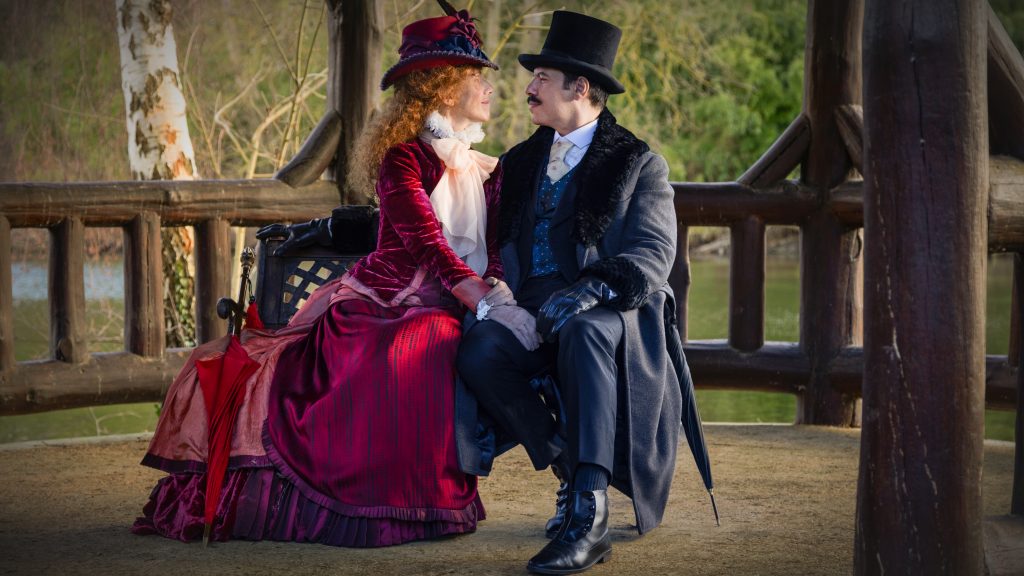
The narrative unfolds in reverse—a storytelling gambit that begins with Bernhardt at the twilight of her glittering career, confined to a hospital bed, yet radiating a defiant, irrepressible spirit. As she prepares for the inevitable, her reminiscences catapult us back to the vibrancy of turn-of-the-century Paris. Amid a backdrop of Art Nouveau splendour and burgeoning consumer culture, we are drawn into the love affair with Guitry, and enticed by cameo appearances from historical figures like Sigmund Freud and Émile Zola.
Yet, beneath the dazzling surface of lavish parties and scandalous rendezvous, Nicloux deftly explores the scars of Bernhardt’s past. The revelation of her childhood trauma and the vulnerability lurking behind her glamorous veneer lend the film a heart-wrenching depth. Lucien’s heartfelt musing that “the only thing that exists is the present,” transforms Bernhardt’s tumultuous journey into an ode to living—each moment savoured, each passion defied, each heartbreak transmuted into art.
When Sarah Bernhardt died in 1923, thousands lined the streets of Paris for her funeral procession. There have been dozens of books written about her, and she seems to be continually referenced both in fiction, and non- fiction, in literature, stage and screen. For the 100- year anniversary of her death in 2023, the Petit Palais in Paris staged a huge show about her life, with 400 exhibits. Quite the legacy, and much like her own life, she seems to be an exuberant never-ending wellspring of inspiration that isn’t going anywhere.
The brilliant story of the original diva and feminist raconteur is not to be missed.
